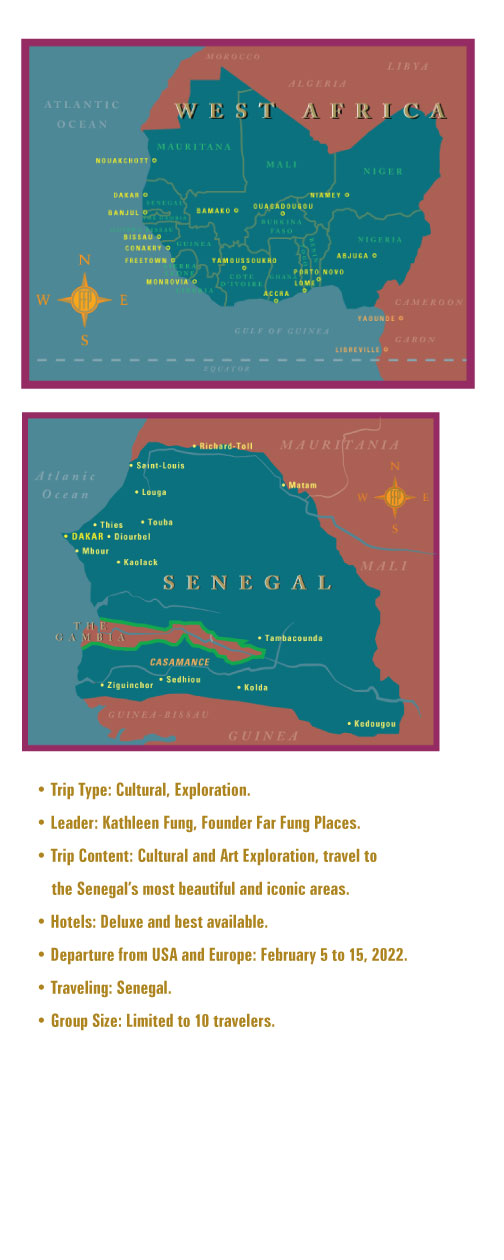Senegal
Part Three: Senegal’s turbulent history has shaped its fascinating present. Since the Stone Age, kingdoms have grown and dissolved, empires have formed and collapsed, colonies have been imposed and dismantled. African, Arab and European civilizations have laid claim to its lands, islands, rivers and coasts; their languages, cultures and traditions are woven into the unique fabric of Senegambia today.
We begin by touching down in mainland Africa’s westernmost city, Dakar. Situated on the Cap-Vert peninsula, Senegal’s oceanside capital has long been one of the most vibrant cities on the continent, known for its lively markets, thriving ports and colonial history. Here, we will wander around the bougainvillea-lined streets and pastel-colored houses of Gorée island, visit its infamous Maison des Esclaves (Slave House) and gain a deeper insight into African civilization at West Africa’s largest museum.
An island-city in the heart of the Senegal River estuary, Saint-Louis is referred to as the ‘Venice of Africa’ due its colonial architecture, plentiful quays and fleet of motorized canoes. Like Ile Gorée, the city is a UNESCO World Heritage site and crossing the 550-yard Faidherbe Bridge is like stepping into a 19th century postcard of hearty taverns, elegant mansions and cobbled stables; a postcard we will explore by horse and cart.
The following morning, we set off bird-watching in the waterways of the Djoudj National Park, home to millions of winged residents, including the largest giant pelican population in the country.
Senegal boasts 330 miles of golden coastline, as well as mighty rivers, mazy deltas and alluring national parks, but perhaps its most memorable natural wonder is a one square-mile lake with a glistening pink veneer: Lac Rose. The group will spend a day relaxing by the water’s edge with an option to visit the traditional fishing village of Kayar, before swapping the Sahelian climate for the verdant paradise of Casamance.
Lying in the sub-tropics, Casamance is a land of rich forests, vibrant waterways, bountiful rice paddies and towering palm trees. Separated from the north of Senegal by The Gambia, it is also culturally separate as the Diola, not the Wolof, are the dominant tribe. During our stay, the group will immerse themselves in the traditions of the Diola people, from attending a mystical Kumpo ceremony to marveling at impluvial architecture, exploring the natural landscape by pirogue and even meeting the enigmatic King of Oussouye: a meritocratic leader who is part spiritual interpreter, part community liaison and always wears red.
In the tranquil city of Ziguinchor, we will unwind by the riverside before swapping one renowned West African river for another as we head north into The Gambia on our way to the Sene Delta in Senegal.
Please inquire about our day-to-day itinerary for more details.
Land/Air Cost
Approximate Land price: $6700 per person, double occupancy, based on a minimum of six people. Single supplement $1000 per single. International airfares: from $1275 plus taxes approximately.
Return to International Travel Programs 2022
|











